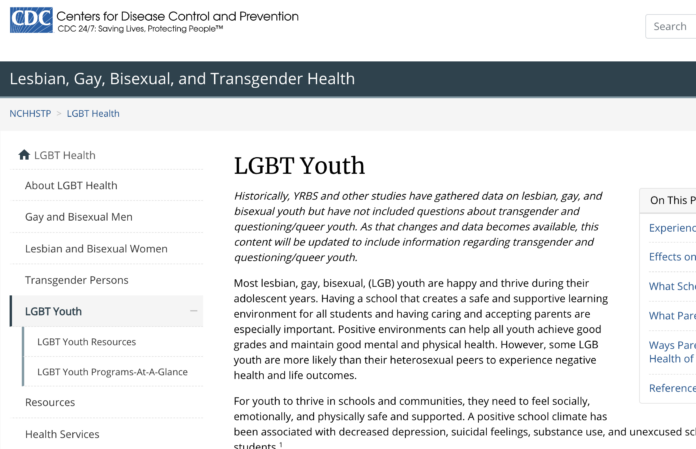By: CDC
Published by CDC
Page last reviewed: June 21, 2017
What Schools Can Do
Schools can implement evidence-based policies, procedures, and activities designed to promote a healthy environment for all youth, including LGB students. For example, research has shown that in schools with LGB support groups (such as gay-straight alliances), LGB students were less likely to experience threats of violence, miss school because they felt unsafe, or attempt suicide than those students in schools without LGB support groups.8 A recent study found that LGB students had fewer suicidal thoughts and attempts when schools had gay-straight alliances and policies prohibiting expression of homophobia in place for 3 or more years.9
To help promote health and safety among LGB youth, schools can implement the following policies and practices (with accompanying citations)
- Encourage respect for all students and prohibit bullying, harassment, and violence against all students.10
- Identify “safe spaces”, such as counselors’ offices or designated classrooms, where LGB youth can receive support from administrators, teachers, or other school staff.11
- Encourage student-led and student-organized school clubs that promote a safe, welcoming, and accepting school environment (e.g., gay-straight alliances or gender and sexuality alliances, which are school clubs open to youth of all sexual orientations and genders).11-13
- Ensure that health curricula or educational materials include HIV, other STD, and pregnancy prevention information that is relevant to LGB youth (such as ensuring that curricula or materials use language and terminology.11,14
- Provide trainings to school staff on how to create safe and supportive school environments for all students, regardless of sexual orientation or gender identity, and encourage staff to attend these trainings.11,15
- Facilitate access to community-based providers who have experience providing health services, including HIV/STD testing and counseling, social, and psychological services to LGBTQ youth.11,16
Source: https://www.cdc.gov/lgbthealth/youth.htm
Why this article: I highly recommend you read the full article through the link.
This collection of information is a bit outdated and missing key information and perspectives. It is most valuable for it’s recognition of public schools as a space where violence against LGBT youth occurs, how it might differ from the violence heterosexual youth faces, and its recommendation on how to approach fixing these issues.




